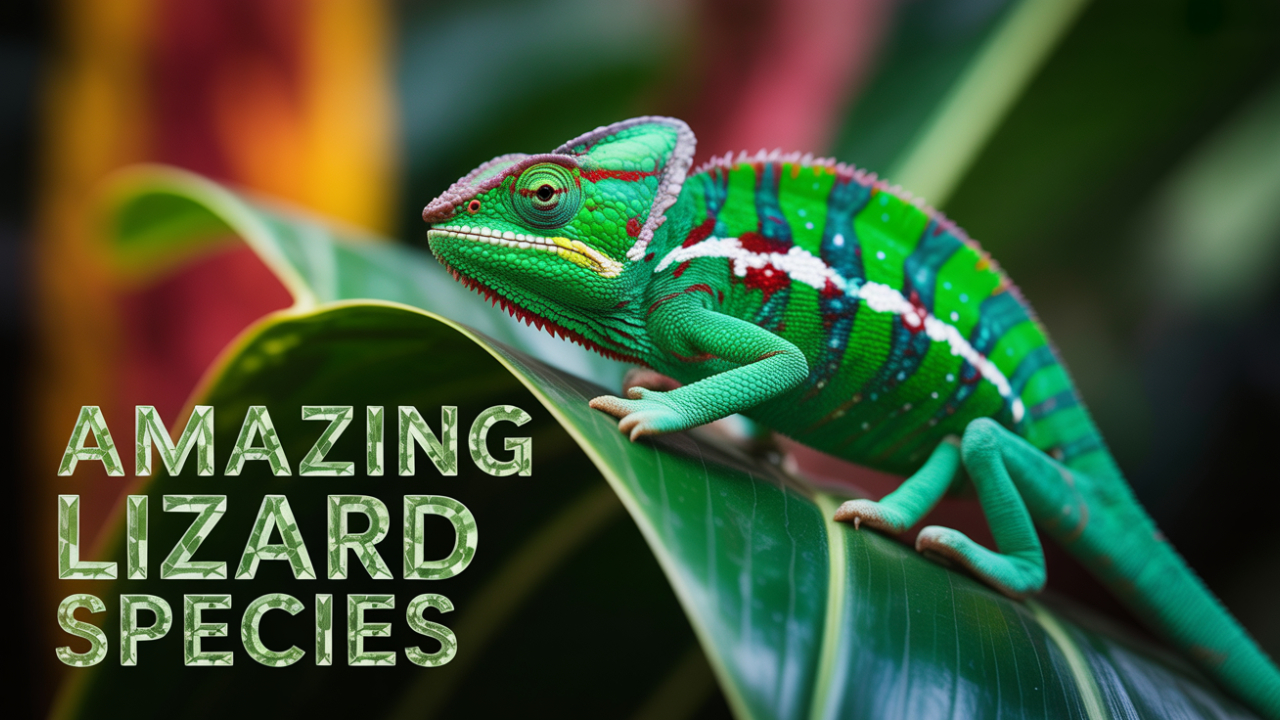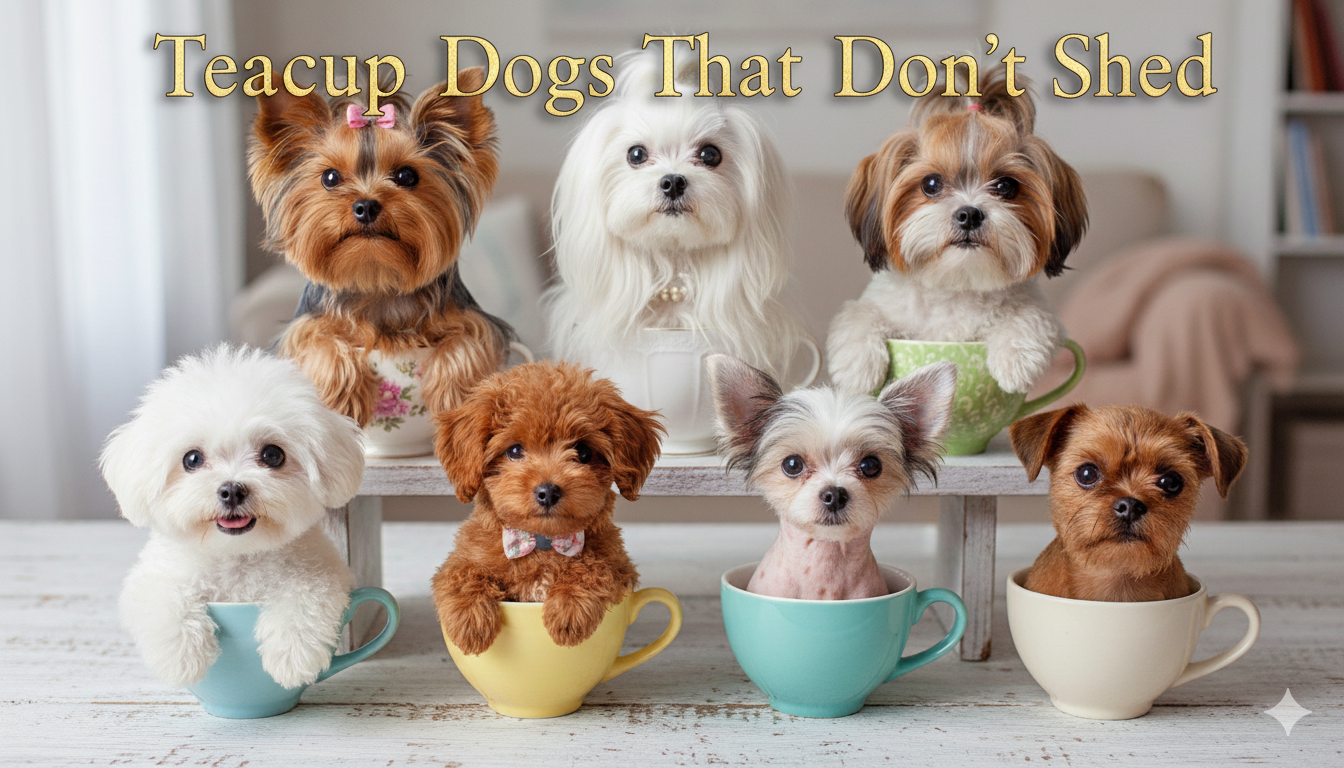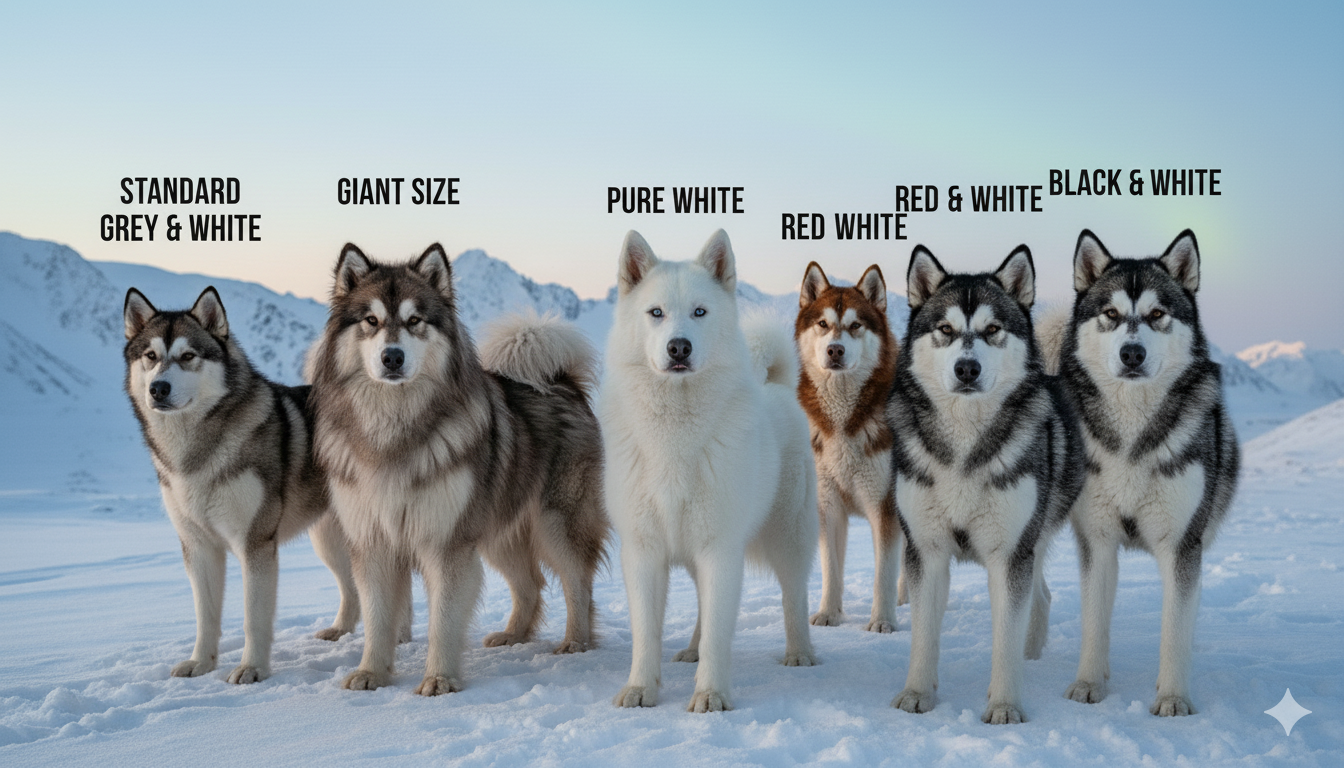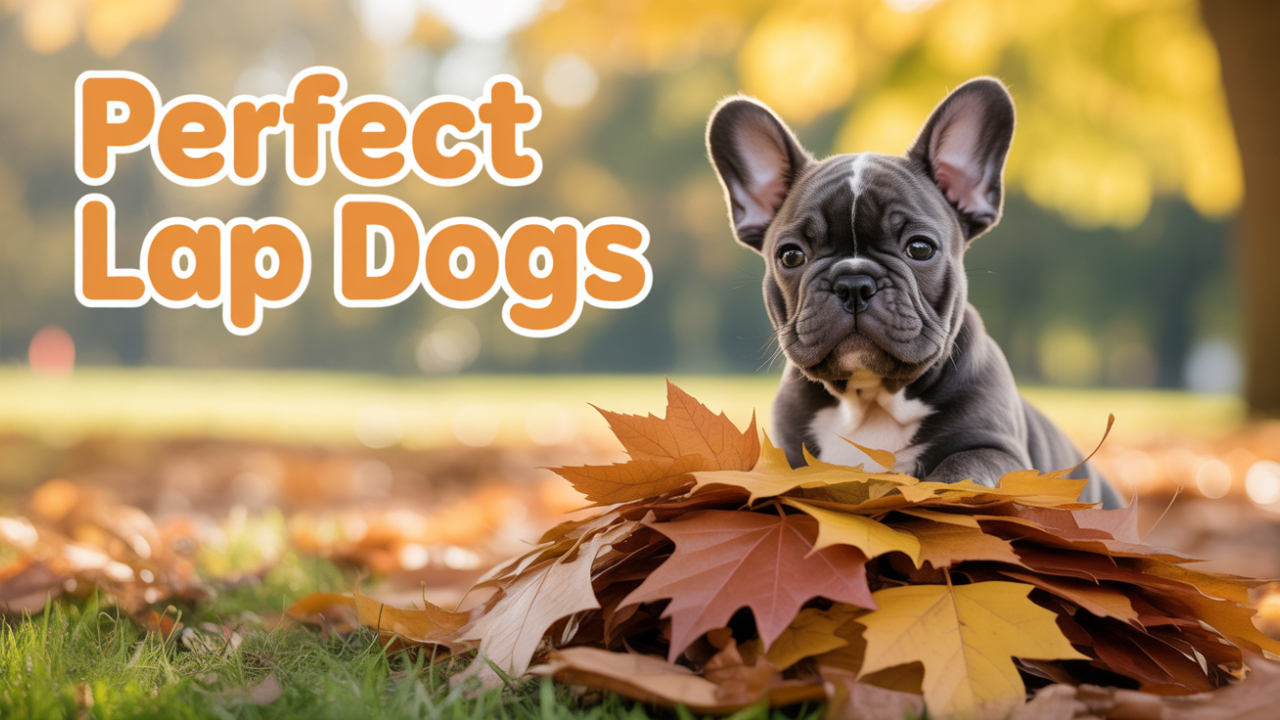About different types of alaskan malamute These dogs are generally classified by their size, coat color, and lineage. The most famous are the Standard Malamute, which is powerful and hardy, and the Giant Malamute, which is bigger and typically more muscular. Their coat colors vary from gray and black to sable and red. Knowing these various types allows prospective owners to select the perfect match for their lifestyle. We’ll explore these types in our blog post below, giving you an understanding of their characteristics, needs, and how to choose the right Alaskan Malamute for you.
The Foundation Lines of Alaskan Malamutes

The Alaskan Malamute, a breed steeped in history, has several foundation lines that have significantly influenced its development. To help you understand these lines and what they mean, join me as we explore the breed’s unique characteristics, historical significance, and the contributions of its early breeders. The main foundation lines are the Kotzebue, M’Loot, and Hinman-Irwin strains, which brought forth various traits that define the modern Alaskan Malamute.
1. The Kotzebue Strain
The Kotzebue strain comes from dogs bred by the Kotzebue Sound area of Alaska, thought to have been founded in the first decade of the 20th century. This line is known for its endurance and power, attributes required by the severe Arctic conditions. Kotzebue Malamutes come in all the traditional colors of the Alaskan Malamute breed – gray, black, sable, and red – with the unique facial markings.
Temperamentally, these dogs are known for their friendliness and loyalty, making them outstanding companions and workers. Their working prowess glistens in sledding and hauling, as with their Malimiut Inupiaq ancestors. Among Kotzebue Malamutes, “Tunguska” is still a legend in competitive sled dog racing circles.
2. The M’Loot Strain
The M’Loot strain is different because of its focus on size and physicality. Breeders were out to build a bigger, more powerful Malamute and that led to their own set of goals that differentiated this line. M’Loot Malamutes tend to have a heavier bone structure and denser coat, allowing them to excel in inclement weather.
The impact of the M’Loot strain lingers today in Alaskan Malamutes, with many of our modern dogs descending from this line. Their strong physique and working potential make them perfect for both companionship and work.
3. The Hinman-Irwin Strain
The Hinman-Irwin strain was the legacy of early breeders like Dr. William Hinman and his partner, Edward Irwin. This strain contributes distinct physical traits such as a more sculpted look and increased intelligence. They have an independent-spirited yet trainable temperament.
We cannot overstate the role the Hinman-Irwin strain played in making the breed a great working dog. Their input has molded a more varied Alaskan Malamute that is proficient in stamina and adaptability.
4. The Modern Synthesis
New breeding has compounded traits from other strains. We’ve tried to keep it ‘breed standard’ and still add the best features. Trying to get a balanced modern Alaskan Malamute is difficult when pure lines have been watered down over the years. These complexities have been navigated by key breeders who have ensured that the breed’s integrity remains intact even as it adapts.
What Are the Giant Alaskan Malamutes?

Giant Alaskan Malamutes are not a separate breed, but a bigger version of the normal Alaskan Malamute. They typically are the result of cross-breeding with Tibetan Mastiffs and Chows to make them bigger and have a thicker coat. This breeding trend for dogs that stand out due to their substantial size has detractors who say this emphasis on physical characteristics strays from the characteristics that make a good working dog, which is what the Alaskan Malamute was bred to be.
Giant Alaskan Malamutes were physically huge, with some specimens tipping the scales at over 68 kilograms. This weight range is far above the normal for Alaskan Malamutes, which is usually 32 to 45 kilograms. No “Giant” exists in breed standards, so these dogs may not meet the breed standard. Usually, they are bigger framed and have a denser coat, which can be aesthetically impressive but potentially problematic for health.
Temperamentally, giant Alaskan Malamutes can be lovable and devoted companions, ideal for families. Their docile temperament makes them lovable to children, but owners need to understand their size can cause accidental harm if they are not properly trained and socialized. It might come as a surprise to learn that although they are generally friendly, their size alone necessitates responsible management and awareness about their needs.
Giant Alaskan Malamutes require serious dedication. They need room to roam, daily activity, and a diet that sustains their larger build. They aren’t for just anyone since they require more than regular Malamutes. Since the breed standard doesn’t have a “Giant” category, they can’t compete in conformation shows or other breed-based events, which can matter to potential owners.
How Do Working and Show Lines Differ?

How Working and Show Lines Differ
Although both types share the same breed heritage, they were selectively bred for different purposes, resulting in some notable differences in physical traits, temperament, and behavioral tendencies.
Working Dogs
Working lines Alaskan Malamutes were bred for strength and stamina. These dogs are performance machines, with sinewy, athletic frames that allow them to haul hefty sleds across great distances. Their physiques complement their positions, with a focus on being athletic and practical.
Working lines are trained for things like pulling sleds, search and rescue, and dog sports. Such dogs need strenuous training programs to stretch both body and mind.
For working Malamutes, physical activity and mental stimulation are paramount. Without appropriate outlets, they turn restless or destructive. Open places, such as the countryside or homes with a lot of outdoor space, are perfect for these dogs because they flourish when you give them strenuous exercise.
Show Dogs
Show Alaskan Malamutes are judged against other dogs. They seek to confirm that your dog meets the standards of their breed, including conformation, coat quality and color. They have to be groomed and prepared to ‘show’ their physical attributes just as much.
Working or show lines of dogs, how are they different? Judges respect a well-groomed dog because it indicates care. Winning Malamutes are often a balance of beauty and type.
Show dogs are important for advertising the breed. They assist in establishing and preserving the characteristics that make Alaskan Malamutes what they are so they can be passed on to future generations.
Temperament Variations
Temperament can be very different between working and show lines. Working lines tend to be more intense and driven as they were bred to do hard-headed work. They have a much stronger prey drive and more instinctual behaviors, so they are great for hard work.
Show lines tend to display a more relaxed and mellow disposition. They are bred to be calm and sociable, which makes them more trainable and easier to live with in a family environment.
Breeding can greatly impact behavioral traits in Malamutes. Socialization is equally important for both working and show lines. Working dogs often need more heavy-duty socialization because they’re independent thinkers. Personalities can be very different within each line, indicating that not all traits are inherited.
A Spectrum of Coat Colors
The coat color of Alaskan Malamutes is important. Understanding the various coat colors, their implications, and how they relate to genetics is essential for both potential owners and breeders alike. This segment explores the typical and less common coat colors, alongside the distinctive markings and patterns that add to the uniqueness of these dogs.
Standard Colors
- Black: A deep, solid black that is striking and common.
- Gray ranges from light silver to dark charcoal, often with a soft sheen.
- Red: A rich, rusty red that can vary in intensity.
- Sable: A mix of colors, often with a darker back and a lighter undercoat.
- White: Typically seen on the belly and paws, contrasting against darker shades.
These standard colors are breed standard and are a big part of the Malamute’s rugged appearance. These colors are often what make the breed look good. Black and gray are very desirable. They are color determined by genetic factors with alleles responsible for each. The appeal of these traditional colors attracts prospective owners who covet the classic appearance of an Alaskan Malamute.
Rare Colors
Rare coat colors like lilac or blue aren’t often encountered and can really boost a Malamute’s uniqueness. It’s this uniqueness of colors that makes them such a sought after breed. They’re so rare and therefore demanded, yet breeding for these colors presents difficulties. Genetic mutations may be the source of these unique hues, but they could bring along health issues that need to be taken into account.
Markings and Patterns
- Masks: Dark markings around the eyes and muzzle.
- Blaze: A white stripe running down the center of the face.
- Socks: White markings on the feet.
- Cape: A darker color often seen on the back and shoulders.
These unique markings give each Malamute his own identity. The genetics behind these patterns is complex, dictated by several genes interacting in specific ways. Distinct markings can mesmerize Malamute owners and make their dogs a head-turner in a crowd.
Why Coat Length Matters
Alaskan Malamutes do have an incredibly important coat length factor. Knowing what coat length really means can assist prospective owners with care decisions and highlight the versatility of the breed.
The Standard Coat
Alaskan Malamutes have a heavy, double-coated standard coat. The top coat is harsh and straight, and the undercoat is soft and dense. This mix gives insulation from cold and protects the dog from moisture. A healthy standard coat exhibits a dense texture, ensuring that the dog can regulate its body temperature even in the most extreme conditions.
Keeping a standard coat in good shape requires max grooming. Monthly brushing will help to remove loose hairs and prevent matting. Bathing should be limited because too much bathing strips the coat of its natural oils and causes it to dry out. The breed’s standard coat is functional in more ways than one; it increases the breed’s working capabilities as it enables them to stay warm in strenuous endeavors like sledding or weight pulls.
The Long Coat
Long-coated Alaskan Malamutes are more luxurious, with longer fur that can make them look more regal. This coat length is alluring to dog lovers and can make them distinct in the ring. The allure of a long coat presents its own temptation.
One of the biggest responsibilities of a long-coated dog owner is consistent grooming, often daily brushing to prevent tangles and mats. This is especially true during seasonal shedding periods when the undercoat is shed. The grooming commitment can be heavy, scaring away prospective owners.
Performance wise, a long coat can affect a Malamute’s working ability. While it provides great insulation, it can lead to overheating during intense activities in warmer temperatures. Long-coated Malamutes can be more difficult to keep clean in muddy or wet weather.
My Perspective on Breed Purity
My take on breed purity. First, it preserves the breed—we wouldn’t have a Malamute if not for the dog’s signature physical traits, temperament and working ability. A Malamute of pure blood will come with a stout body, hearty stamina and a warm but proud disposition. It’s these traits, not their breed purity, that made them excellent sled dogs in the past and make them great family dogs today. By making purity paramount, breeders keep these characteristics at the forefront so that generations to come can experience the breed’s special advantages.
Breeding it in with other breeds can be disastrous to the Malamute’s nature. For example, if a Malamute is bred with another breed, it could then carry diluted traits. This might cause its size to alter, the type of coat it has, or even its temperament. A crossbreed might not have the work ethic or loyalty of pure Malamutes. The influx of new genes can cause health problems that were previously minimized in pure lines. For example, a blend with a smaller breed could yield a dog that is more susceptible to some health issues, like joint problems, that can really diminish their life.
Sure, keep the breed pure, but let it be diverse! Such equilibrium permits bringing in new bloodlines that can improve health and vitality. Through thoughtful selection of breeding pairs that preserve the Malamute essence and infuse advantageous characteristics, breeders can help create a healthier population. This facilitates a more diverse gene pool, which is crucial in preventing inbreeding health problems.
About my thoughts on breed purity. Focus on health screens, genetic testing, and breed standards. In addition to preserving the breed’s future, they inform prospective owners of the value of selecting a good breeder. This guarantees that buyers get a well-bred Malamute that matches their lifestyle and needs.
Conclusion
Knowing the various types of Alaskan Malamute allows you to admire this special breed. Each line provides extraordinary characteristics, be it working or show. Our giant Malamutes are beautiful with their size, which is complemented by the coat colors. Coat length is another factor that influences their care and comfort in different climates. As long as we keep them purebred, we’ll keep them strong.
Exploring these aspects enriches our relationship with Alaskan Malamutes. If you’re thinking about inviting one home to join your pack, consider which type suits your lifestyle. Do your research, talk to breeders, and prepare for a faithful friend. Your adventure into the world of Malamutes stands ready.
Frequently Asked Questions
What are the main types of Alaskan Malamutes?
Alaskan Malamutes primarily fall into two categories: working lines and show lines. Working lines prioritize strength and stamina in their breeding. Show lines emphasize aesthetics and adherence to breed standards.
Are there giant Alaskan Malamutes?
Yep, giant Alaskan Malamutes. They can weigh between 45 and 60 kilograms and are known for their impressive size and strength. They all share similar health profiles other than having different health precautions due to their size.
How do working and show lines differ?
Working lines are bred for tasks such as sled pulling, with a focus on endurance and power. Show lines focus on looks, fitting the breed standard and can sometimes sacrifice working ability.
What coat colors do Alaskan Malamutes come in?
Alaskan Malamutes come in various coat colors such as gray, black, sable, and red. They can exhibit white markings which are often found on their faces and legs.
Why is coat length important for Alaskan Malamutes?
Coat length provides additional insulation and is a defense against rough weather. A double coat, which is common for the breed, keeps them warm in cold temperatures and cool in warmer ones. Proper grooming is essential for coat health.
What is breed purity in Alaskan Malamutes?
Breed purity is for preserving the original traits of the Alaskan Malamute. This preserves the breed’s purity and wellness. Ethical breeding is essential to maintain these characteristics.
How can I choose the right type of Alaskan Malamute for me?
Think about your lifestyle and requirements. If you want a companion and a show dog, a show line may be perfect. For the active person who wants a working dog, you would be better off with a working line.





